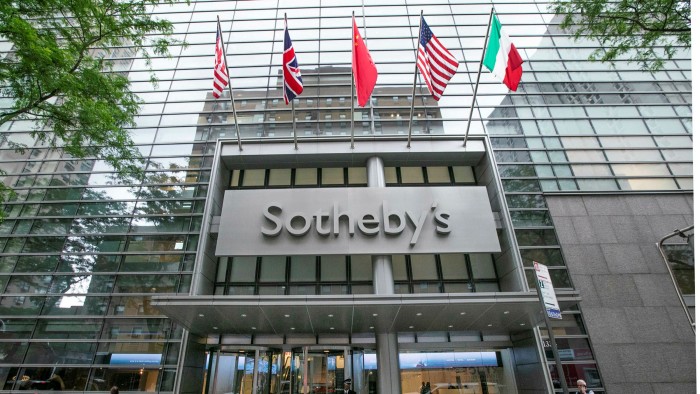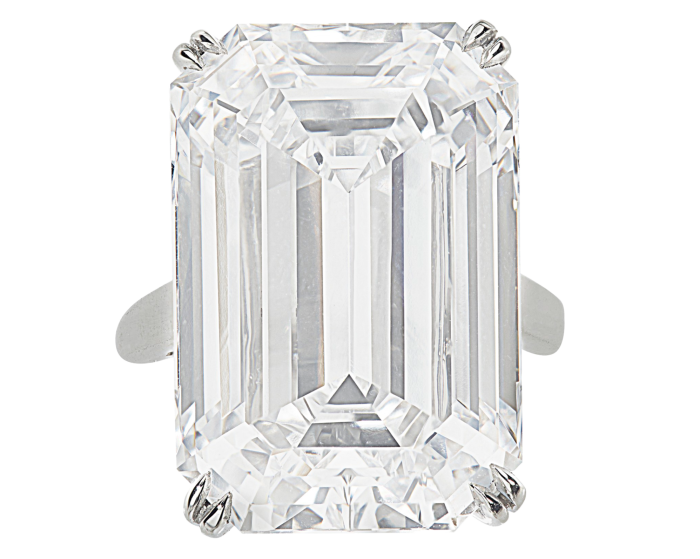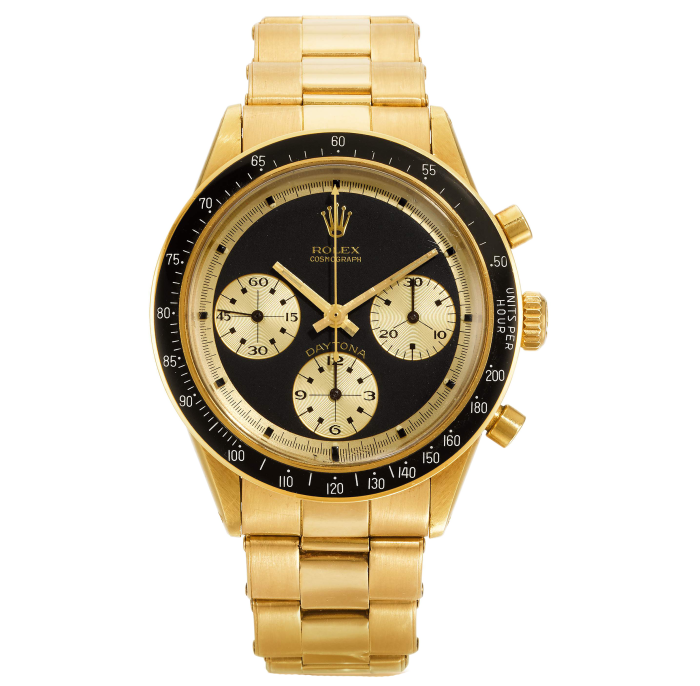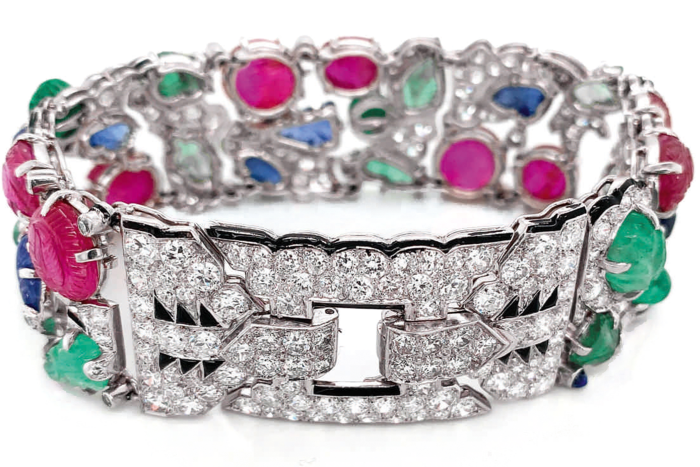Online sales success shines a light in the gloom of luxury auctions

Roula Khalaf, Editor of the FT, selects her favourite stories in this weekly newsletter.
The coronavirus pandemic has changed assumptions about auctions of watches and jewellery. Previously, many in the business had believed there was a price ceiling for online sales. But since auction houses have been forced to focus their efforts online, world-record prices have been fetched and houses have adapted their business plans as a result.
Timed online sales accounted for only 5 per cent of jewellery auctions at Bonhams before the pandemic. However, Jean Ghika, global head of jewellery, says they will be an “integral part” of the sales calendar in 2021.
Rival house Christie’s, on the other hand, is already adding timed eBay-style online auctions in more regions. Its aim is to hold at least 50 per cent of its luxury group auctions (jewellery, watches, wine, handbags and sneakers) online, and up to two-thirds in certain categories. Before coronavirus, the figure was between 38 and 40 per cent.
Aline Sylla-Walbaum, Christie’s global managing director for luxury, says holding online timed auctions was not an “emergency fix” because there was an existing plan in place. However, not being able to operate live auctions meant the company “discovered that the potential of the online [format] was so much more than we expected it to be”.
Sell-through rates in luxury sales between April and July ranged from 84 to 97 per cent, compared with 81 per cent in the whole of 2019. Twenty-nine per cent of buyers were new to Christie’s, while 27 per cent were existing clients “converted” to participating online.

Christie’s set a world record for a jewel sold in an online-only auction when a 28.86-carat, D colour diamond sold for $2,115,000 in June. “We really wanted to break that glass ceiling so that our consignors and buyers alike would be comfortable it is not just entry-level items, such as the bestseller costume jewellery, that you can comfortably sell online, but it can be really almost any value,” says Ms Sylla-Walbaum.
In July, Sotheby’s broke its own world record for a watch sold in an online auction (previously set in June by a 1904 Dent Ultra Complication, in the first online auction dedicated to pocket watches) when a 1960s John Player Special Rolex Daytona sold for £1,215,000. Before the pandemic, the auction house had assumed a price ceiling of about $50,000 for online sales, according to Josh Pullan, Sotheby’s global managing director for watches.

He says there has been a change in attitude to buying higher-priced items online, partly because we have “all embraced digital channels more than ever before” during lockdown. Sotheby’s held 48 online sales of watches between January 1 and July 31, bringing in $28m, compared with $9m for 14 sales in the whole of 2019.
Mr Pullan says Covid-19 expedited a longer-term strategy to do more online. Sotheby’s launched weekly timed online auctions in Hong Kong in April in response to coronavirus. “We wanted to provide [clients with] a way to have liquidity at a time when actually being able to sell or buy was certainly going to be very challenging because everything was going into lockdown,” he says.
Sotheby’s Watches Weekly then expanded to Geneva and New York in May, and in July to London. The company has invested in additional photography, video content and 360-degree spinning images; digital marketing and advertising and a chat function connecting clients with specialists. Watches Weekly sales typically include 10-15 pieces but, inspired by Sotheby’s single-lot online sale of a Cartier Tutti Frutti Art Deco bracelet for $1.34m in April, the watches department held its first single-lot timed auction for the John Player Special Rolex Daytona. The jewellery department has also launched weekly online sales.

Mr Pullan argues that holding four weekly watch sales will not dilute quality in favour of quantity: he says the average online lot value was $28,000 in July, compared with about $10,000 a year earlier. He adds, however, that because Sotheby’s had made the “most aggressive” move of any auction house into online sales, “we saw exceptional prices being achieved for watches that . . . in many instances probably wouldn’t have been realised in a live auction format”. He attributes this in part to the fact that there was “a lot of pent-up demand, and we were the only show in town for a very long period of time”.
Ms Ghika believes the core of online jewellery sales at Bonhams will be below £50,000. Like other houses, Bonhams has found the online format engages a younger audience: 47 per cent of buyers in its Knightsbridge jewels online sale in June were aged under 50, compared with 35 per cent for a comparable sale in February. While participants came from broadly the same countries, there was a shift: the proportion of UK buyers was lower in the online sale, with the difference made up by bidders from Asia and the US.
It is this global drive to attract new, younger collectors that is behind the recent shift toward timed online auctions, says Sebastian Duthy, managing director of analyst Art Market Research, adding however that “the atmosphere of a [live] auction is exciting and no one wants to lose that entirely”.
Comments